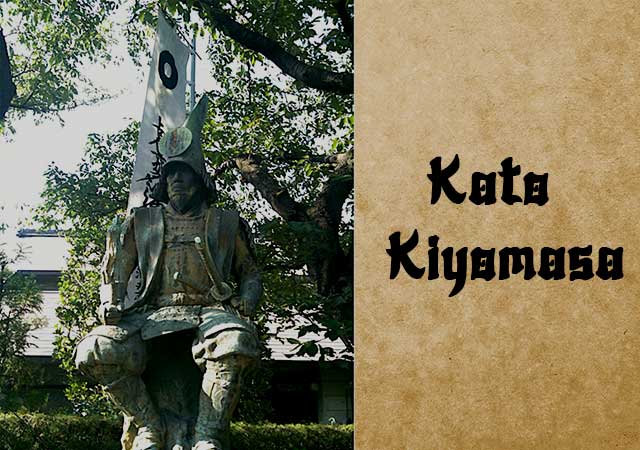
Kato Kiyomasa, a distinguished Daimyo of the Azuchi-Momoyama and Edo periods, was not only a revered warrior but also an accomplished castle architect. Born in the present-day Nakamura Ward, Nagoya City, Kiyomasa's early life took a courageous turn when, following his father's demise, he was sent to live with his uncle at a temple in Tsushima. At the age of 9, while home alone, Kiyomasa thwarted robbers by wearing a devil's mask from Noh and brandishing a small sword, compelling them to flee.
At 15, he entered the services of his cousin, Toyotomi Hideyoshi, participating in pivotal battles such as the Battle of Yamazaki (1582) against Akechi Mitsuhide and the Battle of Shizugatake (1583) against Shibata Katsuie and Oda Nobutaka. His valor earned him the distinction of being named one of the Seven Spears of Shizugatake.
As a senior commander in the Korean Campaign, Kiyomasa played a crucial role in capturing Seoul and Pusan, notably defending the Kiyomasa-designed castle in the Siege of Ulsan. His exploits included spear hunting tigers in Korea, bringing their pelts back to Hideyoshi. However, this practice was later banned due to the risks samurai faced in emulating Kiyomasa's daring feats.
Kato Kiyomasa's multifaceted legacy encompasses not only military achievements but also architectural prowess, leaving an indelible mark on the history of the Azuchi-Momoyama and Edo periods.
In a surprising turn of events during the Battle of Sekigahara, Kato Kiyomasa aligned himself with Tokugawa Ieyasu. Although absent from the actual battlefield, he engaged Tokugawa adversaries in Kyushu, particularly confronting the forces of his neighboring fief, Konishi Yukunaga. Konishi, a Christian, incurred the disdain of the Nichiren sect Buddhist, a sentiment shared by Kiyomasa. Additionally, Konishi's allegiance to Ishida Mitsunari, another samurai with whom Kiyomasa had conflicts, intensified the animosity.
Historical accounts depict Kiyomasa as an awe-inspiring and effective leader, embodying the essence of a samurai. Despite his reputation for creative castle-building expertise, he harbored a brutal side. Notably, during the Battle of Hondo, he ruthlessly ordered the abdomens of pregnant Christian women to be cut open, with the unborn babies' heads subsequently sliced off as a means of suppressing Christianity.
Kiyomasa's architectural prowess was exceptional, marked by the design of strategic castles during the Korean Campaigns. His talent earned him acclaim as the architect of the magnificent Kumamoto Castle. Subsequently, Tokugawa Ieyasu enlisted him to construct the tenshu-dai, the stone ramparts supporting the splendid keep of Nagoya Castle.
During the construction of Nagoya Castle, Kiyomasa utilized surplus building materials to establish the Myogyo-Ji Temple at the site of his birth. Presently situated on the east side of Nakamura Koen, the temple is accompanied by the Kiyomasa Hideyoshi Memorial Museum within the same park. This museum showcases items and displays relevant to these two local heroes. Notably, Nagoya city boasts more statues of Kato Kiyomasa than any other historical figure.
Upon Kiyomasa's sudden demise at the age of 50, rumors circulated suggesting that Tokugawa Ieyasu might have played a role in his death. As an architect involved in Nagoya Castle's construction, Kiyomasa held insights into its strengths and weaknesses. Additionally, being a close relative of the Toyotomi clan, he had been mediating to enhance relations between Tokugawa Ieyasu and Toyotomi Hideyori. Following one such meeting, he fell ill on his journey home by ship and passed away shortly after arriving in Kumamoto.
Kiyomasa, prioritizing military pursuits, showed little interest in refined activities like the tea ceremony or poetry. His valor in battle, no-nonsense and disciplined approach to warfare, along with unwavering adherence to his principles, earned Kato Kiyomasa widespread respect as a samurai.
See also
-
Hojo Soun

Hōjō Nagaudji was one of the prominent military commanders of the late Muromachi period. Thanks to a successful marriage alliance and skillful use of political intrigue, he managed to concentrate full power over the provinces of Suruga, Izu, and Sagami in his own hands. His origins remain unclear, but there is a possibility that he was connected to the Heiji clan of Ise Province, since early in his life he bore the name Ise Shinkurō.
-
Hirano Nagayasu
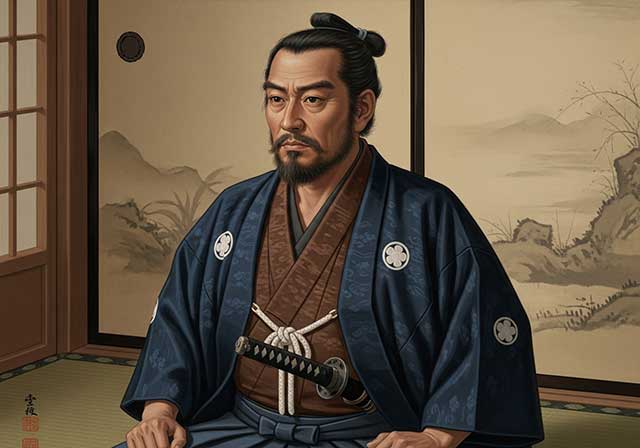
From an early age, Hirano Nagayasu was in the service of Toyotomi Hideyoshi, since Nagayasu’s father, Nagaharu, had faithfully served Hideyoshi during Hideyoshi’s own childhood. Thus, the connection between the Hirano family and the Toyotomi house was established long before Hideyoshi’s rise to power and took the form of hereditary vassal loyalty.
-
Hattori Hanzo

Hattori Hanzō, also known by the name Hattori Masanari, was the third son of Hattori Yasunaga, a samurai who served the Matsudaira clan. In his childhood he was called Tigachi Hanzō. His father held the highest rank in the shinobi hierarchy, that of jōnin, and Hanzō followed in his father’s footsteps, choosing the same path.
-
Hatano Hideharu
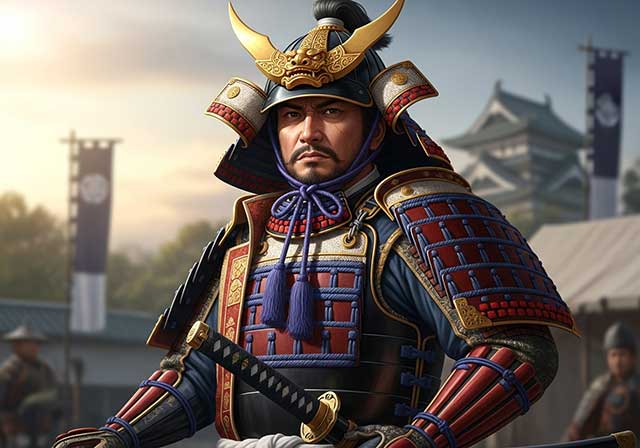
Hatano Hideharu was the eldest son of Hatano Harumichi, the head of the Hatano clan. However, in childhood he was adopted by his uncle, Hatano Motohide, and was therefore formally regarded as Motohide’s heir. From the time of Hideharu’s grandfather, Hatano Tanemichi, the Hatano clan had been a vassal of the powerful Miyoshi house, which exerted considerable influence over the Ashikaga shoguns and effectively shaped the political situation in the region. Early in his career, Hideharu served Miyoshi Nagayoshi and, judging by surviving records, held a fairly high position within his lord’s hierarchy, as he was among the select group invited to the enthronement ceremony of Emperor Ōgimachi in 1557.
-
Fukushima Masanori
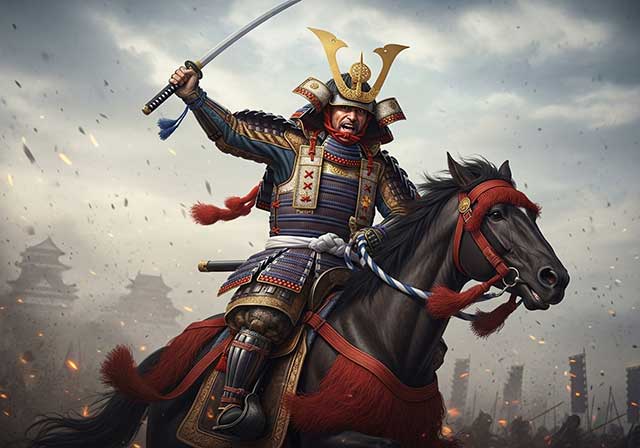
Fukushima Masanori, a samurai from Owari Province, served Toyotomi Hideyoshi and took part in the Battle of Shizugatake, where he distinguished himself so conspicuously that he was awarded the honorary title of one of the “Seven Spears of Shizugatake,” meaning the warriors who had shown the greatest valor in the battle. As a reward for his courage and martial prowess, he was granted land producing an income of 5,000 koku of rice.
-
Uemura Masakatsu
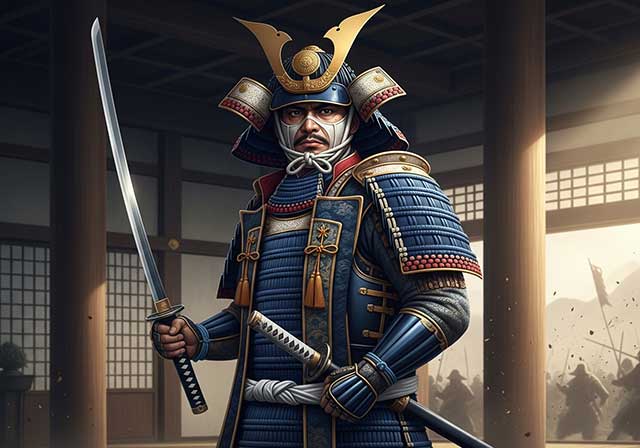
Masakatsu was a member of the Uemura clan and the son of Uemura Masatada; from an early age he served Tokugawa Ieyasu. During the Ikkō-ikki uprising in Mikawa Province in 1563, having converted from the Jōdo Shinshū Buddhist sect to the Jōdoshū sect, he took part in suppressing the rebels. After these events, Masakatsu was appointed a military governor and was granted land holdings. According to a number of sources, he was one of the so-called “Three Governors of Mikawa” (Mikawa sanbugyō), together with Amano Yasukage (1537–1613) and Koriki Kiyonaga (1530–1608).
-
Tomoe Gozen

Gozen is regarded as one of the few historically documented examples of true female warriors of feudal Japan, known as onna-musha or onna-bugeisha. Although Japanese history records countless women who at various times were forced to take up arms—for example, in defense of their castles—Tomoe Gozen was, without any doubt, a genuinely skilled and accomplished fighter. She was the wife of Kiso (Minamoto) Yoshinaka, although The Tale of the Heike describes her more as a female vassal. Yoshinaka rose in rebellion against the Taira clan and, in 1184, captured Kyoto after his victory at the Battle of Kurikawa. After the Taira were driven into the western provinces, Yoshinaka began insistently asserting that he alone was worthy of assuming leadership of the Minamoto clan and taking on the mantle of its head.
-
Tachibana Muneshige

Tachibana Muneshige was born the eldest son of Takahashi Shigetane, one of the principal retainers of the Ōtomo clan and commander of Iwaya Castle. In childhood, he bore the name Senkumamaru. His early years coincided with a period of intense military confrontation between the Ōtomo clan and other powerful warrior houses of Kyūshū—namely the Shimazu, Akizuki, and Ryūzōji clans.

